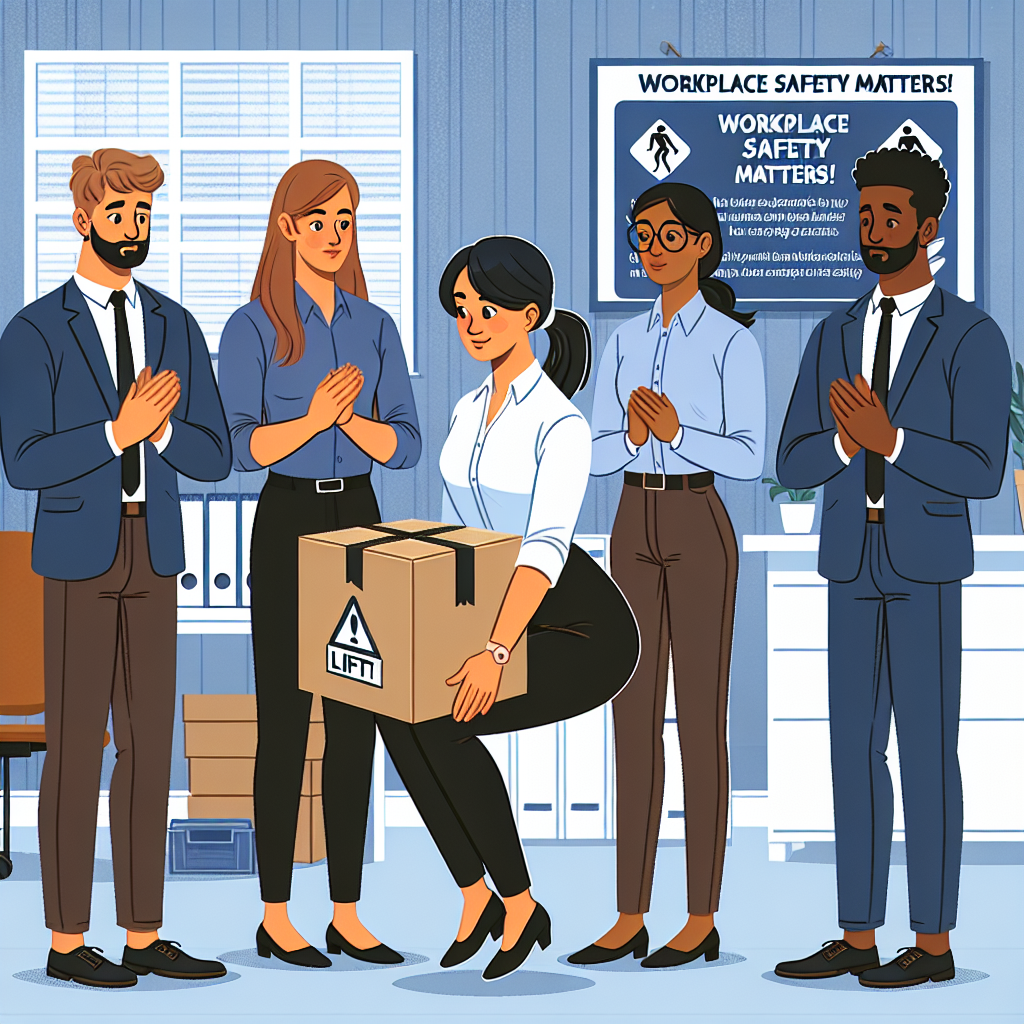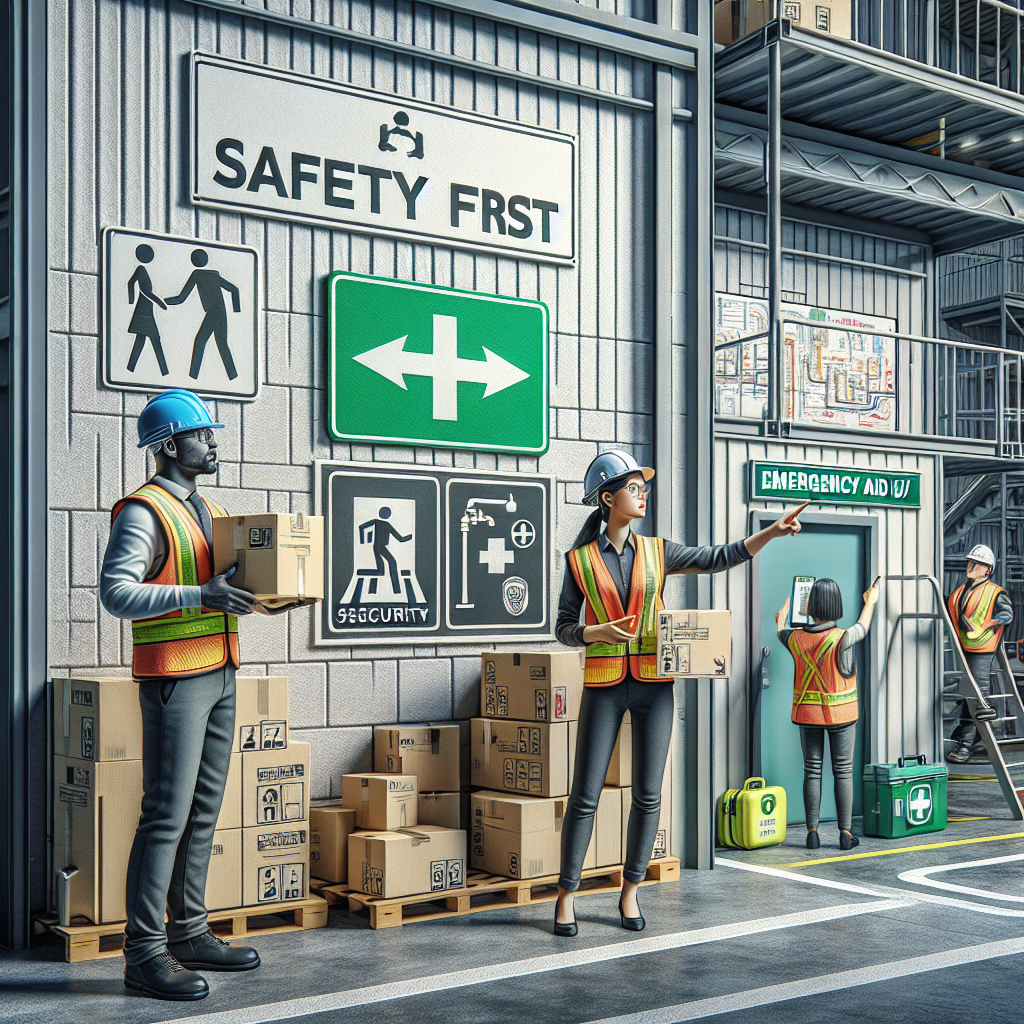In today’s fast-paced work environments, workplace accidents are unfortunately far too common. However, by implementing a few key security tips, you can significantly reduce the risk of injuries and promote a safer work environment for all. From proper training and equipment usage to maintaining a clean and organized workspace, there are countless ways to prevent accidents before they happen. In this guide, we will explore some of the most effective strategies for enhancing workplace safety and minimizing the chances of accidents occurring. By prioritizing security measures and staying vigilant, you can help create a secure and protected workplace for you and your team.
Understanding Workplace Safety Regulations

– Familiarize yourself with OSHA guidelines
OSHA, the Occupational Safety and Health Administration, sets forth guidelines and standards to ensure workplace safety across various industries. Familiarizing yourself with OSHA regulations is crucial in preventing workplace accidents. These guidelines cover a wide range of safety aspects, including hazard communication, fall protection, machine guarding, and more.
- Ensure compliance with industry-specific regulations
In addition to OSHA regulations, different industries may have specific safety requirements tailored to their unique risks and challenges. It is essential to identify and comply with these industry-specific regulations to create a safe working environment. For example, construction sites have distinct safety protocols compared to healthcare facilities or manufacturing plants.
- Conduct regular safety audits and inspections
Regular safety audits and inspections play a vital role in ensuring compliance with workplace safety regulations. By conducting thorough assessments of the workplace, potential hazards can be identified and addressed promptly. These audits should cover areas such as equipment safety, emergency procedures, training compliance, and overall adherence to safety protocols.
Creating a Culture of Safety
- Implement safety training programs for all employees
Safety training programs are essential for ensuring that all employees are aware of potential workplace hazards and know how to prevent accidents. These programs should cover topics such as proper lifting techniques, emergency procedures, and the safe operation of equipment. By providing comprehensive training, employees can better understand the importance of safety in the workplace and how to mitigate risks effectively.
- Encourage reporting of potential hazards
Encouraging employees to report potential hazards is crucial for maintaining a safe work environment. By creating a culture where employees feel comfortable speaking up about safety concerns, organizations can identify and address issues before they lead to accidents. It is essential to establish clear reporting procedures and ensure that all reports are taken seriously and addressed promptly.
- Establish clear communication channels for safety concerns
Clear communication channels are vital for ensuring that safety concerns are effectively communicated throughout the organization. This includes providing multiple avenues for employees to report hazards, such as through a designated safety committee, suggestion boxes, or direct communication with supervisors. By promoting open communication about safety issues, organizations can proactively address risks and prevent workplace accidents.

Identifying Common Workplace Hazards
Slips, Trips, and Falls
Slips, trips, and falls are among the most common workplace accidents that can lead to serious injuries. To prevent such incidents, it is crucial to address the following security tips:
- Keep walkways clear and dry: Regularly inspect and clean walkways to remove any obstacles or spills that could pose a slipping hazard. Implement a maintenance schedule to ensure that walkways remain clear and dry throughout the workday.
- Use proper signage for wet floors: In areas where floors are frequently wet or slippery, make sure to use visible signage to alert employees and visitors to potential hazards. This simple precaution can help prevent accidents and promote a culture of safety in the workplace.
- Provide anti-slip footwear where necessary: Depending on the nature of the work environment, consider providing employees with anti-slip footwear to reduce the risk of slips and falls. This proactive measure can significantly enhance traction and stability, especially in areas prone to moisture or debris accumulation.
Ergonomic Hazards
Ergonomic hazards in the workplace can lead to musculoskeletal disorders and other health issues among employees. To address these hazards effectively, it is crucial to implement ergonomic practices that promote comfort and reduce the risk of injuries. Here are some specific tips for preventing ergonomic hazards:
- Adjust workstations for optimal comfort and posture: Ensure that chairs, desks, computer monitors, and other work equipment are adjusted to suit the individual needs of employees. This can help reduce strain on the body and minimize the risk of discomfort or injury.
- Encourage regular breaks and stretching exercises: Encouraging employees to take regular breaks and engage in stretching exercises can help prevent muscle fatigue and stiffness. These simple activities can promote blood circulation and reduce the likelihood of developing musculoskeletal issues.
- Provide ergonomic tools and equipment: Invest in ergonomic tools and equipment such as adjustable chairs, keyboard trays, and footrests to support proper posture and reduce the strain on employees’ bodies. These tools can make a significant difference in preventing ergonomic hazards and promoting overall workplace safety.
Hazardous Materials
Hazardous materials pose a significant risk in the workplace and must be handled with utmost care to prevent accidents and injuries. Here are some key security tips for effectively managing hazardous substances:
- Label all hazardous substances properly: Proper labeling of hazardous materials is crucial for ensuring that employees are aware of the potential risks associated with these substances. Clear and visible labels should include information on the contents, hazards, and necessary precautions.
- Store chemicals in designated areas: To minimize the risk of accidents, hazardous materials should be stored in designated areas that are specifically designed to handle such substances. These storage areas should be well-ventilated, equipped with spill containment measures, and located away from high-traffic areas.
- Train employees on proper handling and disposal procedures: Adequate training is essential to ensure that employees are knowledgeable about the safe handling and disposal of hazardous materials. Training programs should cover topics such as proper PPE usage, emergency response procedures, and waste disposal protocols. Regular refresher courses should be provided to reinforce safe practices and keep employees up-to-date on any changes in procedures.
Implementing Safety Protocols
When it comes to preventing workplace accidents, implementing robust safety protocols is essential. By having clear guidelines and procedures in place, organizations can significantly reduce the risk of incidents occurring. Here are some key strategies to consider:
- Develop emergency response plans for various scenarios: One crucial aspect of safety protocols is having detailed emergency response plans tailored to different types of incidents that could occur in the workplace. Whether it’s a fire, a chemical spill, or a medical emergency, employees should be well-versed in the steps to take to ensure their safety and the safety of others.
- Provide personal protective equipment (PPE) as needed: Another important aspect of safety protocols is ensuring that employees have access to the appropriate personal protective equipment (PPE) for their roles. Whether it’s helmets, gloves, goggles, or ear protection, PPE plays a critical role in minimizing the risk of injuries in hazardous work environments.

– Conduct regular safety drills and simulations: Regular safety drills and simulations are invaluable for ensuring that employees are prepared to respond effectively in the event of an emergency. By practicing evacuation procedures, first aid techniques, and other safety protocols, employees can build confidence in their ability to handle challenging situations and mitigate risks in the workplace.
Utilizing Technology for Safety
In today’s modern workplace, technology plays a crucial role in enhancing safety measures and preventing accidents. By incorporating various technological solutions, employers can create a safer work environment for their employees. Here are some key ways technology can be utilized for safety:
- Install Business Security Cameras in High-Risk Areas: Surveillance cameras can be strategically placed in high-risk areas such as manufacturing floors, construction sites, or warehouses to monitor activities in real-time. These cameras not only act as a deterrent to potential accidents but also provide valuable footage for investigating incidents after they occur.
- Implement Access Control Systems to Restrict Unauthorized Entry: Access control systems, including keycard entry systems or biometric scanners, can limit access to certain areas within the workplace. By restricting unauthorized entry to hazardous zones or sensitive areas, employers can reduce the risk of accidents caused by untrained or unauthorized personnel entering restricted areas.
- Use Safety Apps for Reporting Incidents and Tracking Safety Measures: Safety apps offer a convenient way for employees to report incidents, hazards, or near misses quickly and efficiently. These apps can streamline the reporting process, ensuring that potential safety issues are addressed promptly. Additionally, safety apps can be used to track safety measures, conduct safety inspections, and communicate important safety information to employees in real-time.
Continuous Improvement and Evaluation
- Review and update safety policies regularly
Regularly reviewing and updating safety policies is crucial in ensuring that workplace safety measures are up to date and effective. By regularly assessing and revising safety protocols, organizations can address any gaps or weaknesses in their safety procedures. This proactive approach can help prevent accidents and injuries before they occur.
- Analyze incident reports to identify trends
Analyzing incident reports is a valuable tool in identifying trends and patterns that can help in accident prevention. By carefully examining past incidents, organizations can pinpoint common causes of accidents and implement targeted safety measures to address these issues. This data-driven approach enables organizations to take proactive steps to prevent similar accidents from happening in the future.
- Seek feedback from employees on safety measures and suggestions
Employee feedback is a valuable resource in improving workplace safety. Employees are often on the front lines of operations and can provide valuable insights into potential safety hazards and areas for improvement. By actively seeking and listening to employee feedback on safety measures, organizations can gain a better understanding of potential risks and implement effective safety solutions. This collaborative approach fosters a culture of safety and empowers employees to take an active role in accident prevention.
FAQs: Security Tips for Preventing Workplace Accidents
What are some general security tips for preventing workplace accidents?
Ensuring that all employees are properly trained on safety procedures and protocols is essential in preventing workplace accidents. It is important to regularly inspect and maintain equipment to ensure it is in good working condition. Encouraging a culture of safety where employees feel comfortable reporting any hazards or concerns can also help prevent accidents from occurring.
How can proper ergonomics help prevent workplace accidents?
Proper ergonomics, such as utilizing ergonomic furniture and ensuring employees have correct posture while working, can help prevent strains and injuries. Providing ergonomic training to employees and offering ergonomic assessments can help identify and address potential issues before they lead to accidents.
Why is it important to have clear communication in the workplace to prevent accidents?
Clear communication is crucial in preventing workplace accidents as it ensures that everyone is on the same page regarding safety procedures and protocols. Encouraging open communication allows employees to voice any concerns or hazards they may come across, enabling quick resolution and prevention of accidents.
How can regular safety training contribute to preventing workplace accidents?
Regular safety training keeps employees informed and up to date on the latest safety protocols and procedures, reducing the likelihood of accidents occurring due to ignorance or forgetfulness. It also helps to instill a culture of safety within the workplace, where employees are more aware of their surroundings and potential hazards.